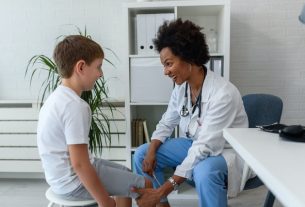Exercises to strengthen or hypertrophy the lower limbs, such as squats, stiffs, lunges, Bulgarian squats, leg presses, deadlifts and pelvic lifts, for example, must be performed respecting the limits of one’s own body and, preferably, under the guidance of a professional. of physical education to prevent the occurrence of injuries.
To achieve hypertrophy, exercises must be done intensely, with a progressive increase in load, under the guidance of a physical education professional, and following a diet suitable for the objective, and it is important to follow the nutritionist’s instructions. See how to diet to gain muscle mass.
In addition to strengthening and hypertrophy, exercises for the lower limbs guarantee good results in terms of reducing sagging and cellulite, as well as improving body balance due to better stabilization of the knee and ankle, for example.
Main exercises
Some of the main exercises that help increase and strengthen the glutes, calves, back and front of the thighs are:
1. Squats
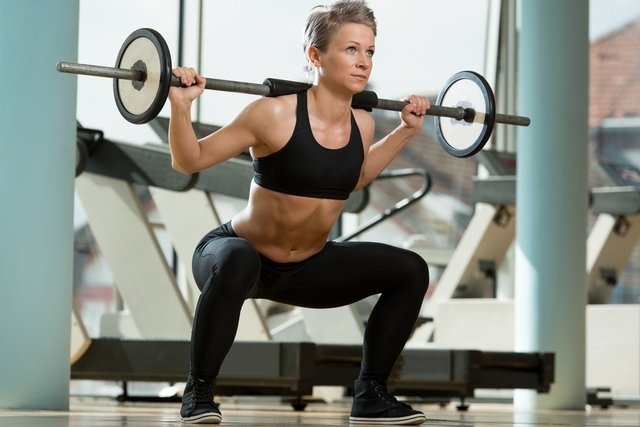
Squats can be done with your own body weight, with a dumbbell or with a barbell, and should be done in the gym under the guidance of a professional to avoid possible injuries.
To do squats with a barbell, you must position the barbell on your back, hold it with your elbows facing forward and keep your heels fixed on the floor. Then, the squat movement must be performed according to the professional’s guidance and at maximum amplitude so that the muscles are worked to the maximum.
In the case of dumbbell squats, you must position the weight in front of the body, close to the chest, or to the side, when two dumbbells are used, and perform the squat movement. When done with your own body weight, simply perform the exercise movement.
The squat is a very complete exercise, as in addition to working the glutes, it also works the quadriceps, which is the muscle on the front of the thigh, abdomen and back. See more details about the squat.
2. Lunge
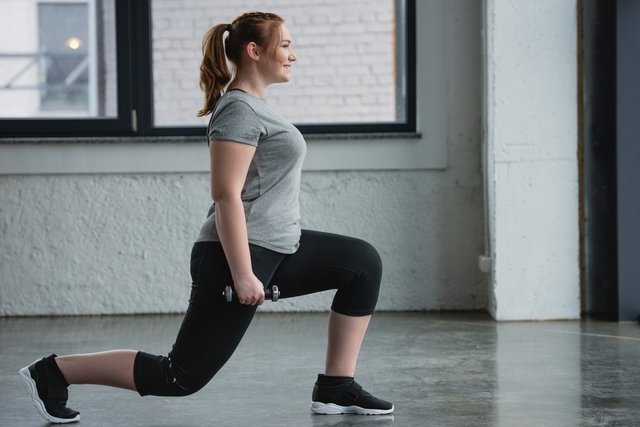
Lunges, also called kicks, are a great exercise to exercise not only the glutes, but also the quadriceps. This exercise can be done with your own body weight, with a barbell on your back or holding a dumbbell and consists of taking a step forward and flexing your knee until the thigh of the leg that moves forward is parallel to the floor, but without the leg moving forward. knee exceeds the line of the foot, and repeat the movement according to the professional’s recommendation.
To intensify the work of the muscle, you can lean your body forward a little and place a step or a block in front or behind to support one of your feet. After completing the repetitions with one leg, you must do the same movement with the other leg. See other ways to lunge.
3. Bulgarian squat
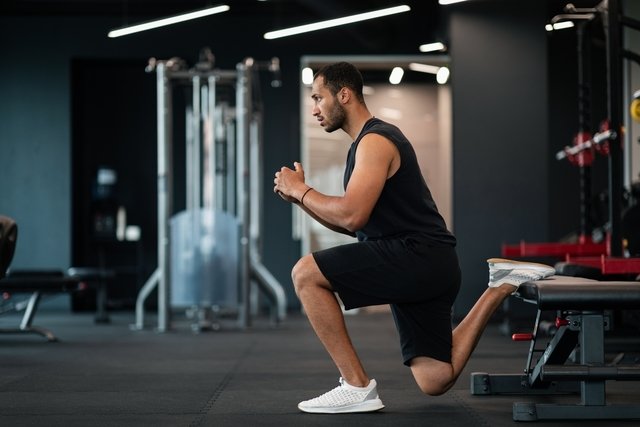
The Bulgarian squat is also a good exercise for strengthening the legs and promoting hypertrophy. To do this exercise, you must take a big step forward and place your back foot on a bench or chair, lean your body forward a little and go down trying to touch your back knee to the floor.
This exercise can be done with just your own body weight or using dumbbells. After completing the repetitions with one leg, you must do the same movement with the other. See more details on how to do the Bulgarian squat.
4. Stiff
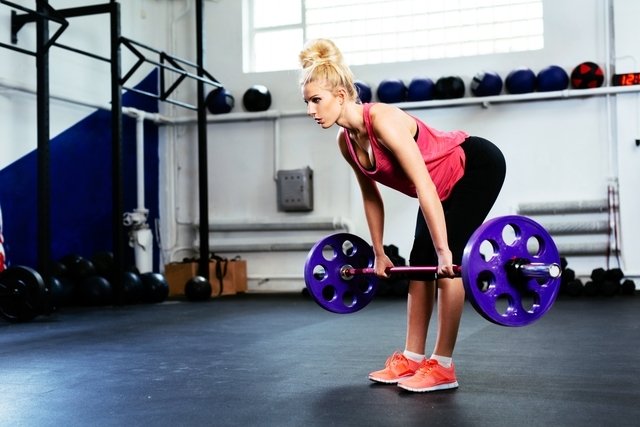
Stiff is an exercise that works the posterior leg muscles and glutes and can be done holding a barbell or dumbbells. The stiff movement consists of lowering the load, which is positioned in front of the body, keeping the spine aligned and the legs straight or slightly flexed. The speed of execution of the movement and the number of repetitions must be established by the professional according to the person’s objective.
Another way to hold the stiff load is by placing the bar on your back, similar to squatting. However, instead of doing the squat, you should perform the stiff movement, this exercise being known as “good morning”. Learn how to stiffen correctly.
Another variation is the unilateral stiff, in which one of the legs is semi-flexed and the other stretched and the exercise movement is carried out, using only the weight of the body or a dumbbell, which must be held with the hand on the side of the leg. semi-flexed leg.
5. Deadlift
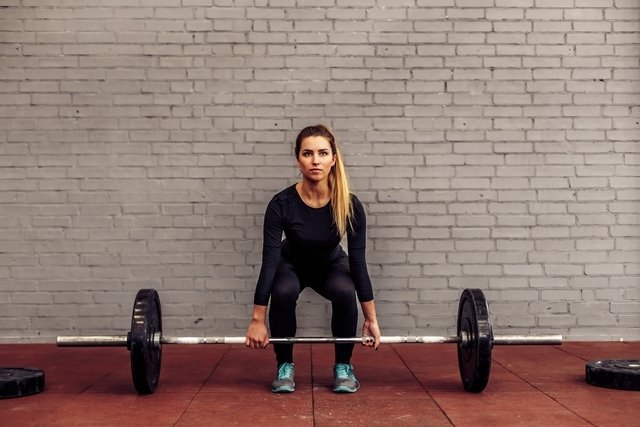
This exercise corresponds to the opposite of the stiff: instead of lowering the load, the deadlift consists of lifting the load, promoting the work of the posterior muscles of the leg and glutes. To do this exercise, the person must place their feet hip-width apart and squat to pick up the bar, keeping their spine aligned. Then, carry out the upward movement until your legs are straight, avoiding throwing your spine backwards. Check out the step-by-step guide on how to do the deadlift.
6. Sumo squat
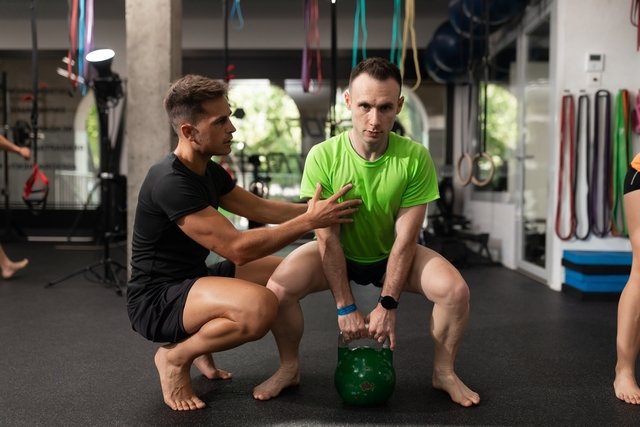
In the sumo squat, the legs must be positioned wider than the hips, with the feet slightly turned outwards, hold the weight in front of the body and towards the floor, and perform the squat movement. To increase the range of movement and stimulate hypertrophy, you can use steps, placing each foot on a step, and doing the exercise movement, trying to move the weight over the step line. See more details on the sumo squat.
7. Pelvic lift
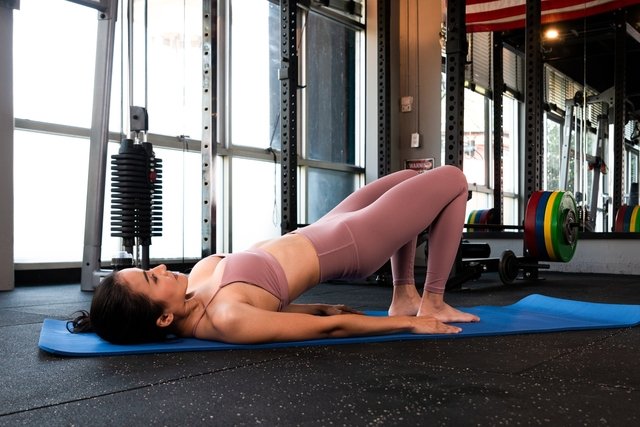
The pelvic lift is a great exercise for working the muscles on the back of the leg and the glutes, especially. This exercise can be done with just your own body weight or using weights. Find out what it is for and learn about the main types of pelvic lift.
In the case of pelvic elevation with your own body weight, you must lie on the floor, as if you were going to do sit-ups, and raise your hips, contracting your glutes and keeping your shoulders on the floor. Then return to the starting position, but without touching the floor, and raise your hips again. This type of elevation can also be done using a weight plate or a dumbbell, which must be placed over the pelvic region.
To do the pelvic lift with weight, it is interesting to have a bench behind you to support your shoulders when doing the lift. Sitting on the floor, you must position the weight above the pelvic region and then lift the weight, contracting the glutes and abdomen, placing the shoulders on the bench and looking up, and then go down avoiding touching the floor and do the movement again.
8. Chair flexor
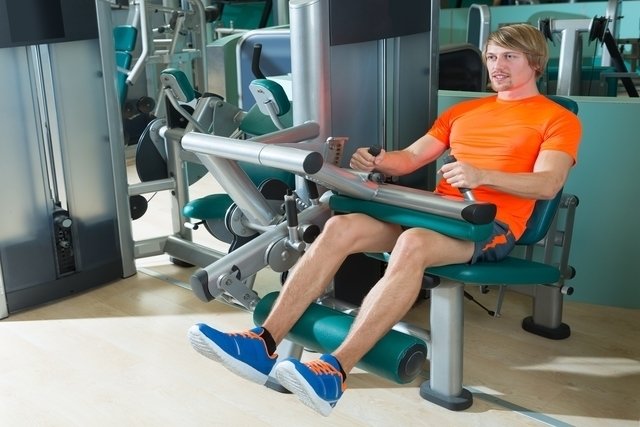
This equipment can be used to help strengthen and hypertrophy the hamstring muscles. To do this, the person must sit in the chair, adjusting the seat so that their spine is against the bench, rest their ankles on the support roller and perform knee flexion movements.
9. Leg press
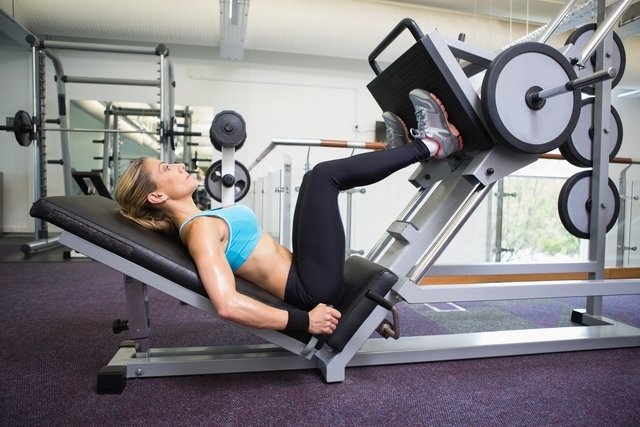
Just like the squat, the leg press is a very complete exercise, allowing not only the work of the muscles on the front of the thigh, but also on the back and glutes. The muscle working most during the leg press depends on the angle at which the movement is performed and the position of the feet.
To put more emphasis on the quadriceps, your feet should be positioned in the lowest part of the platform. It is important that the back is completely supported on the bench, to avoid injuries, in addition to carrying out the pushing movement and allowing the platform to descend to its maximum range, with the exception of people who have posture changes or osteoarticular problems.
10. Extender chair
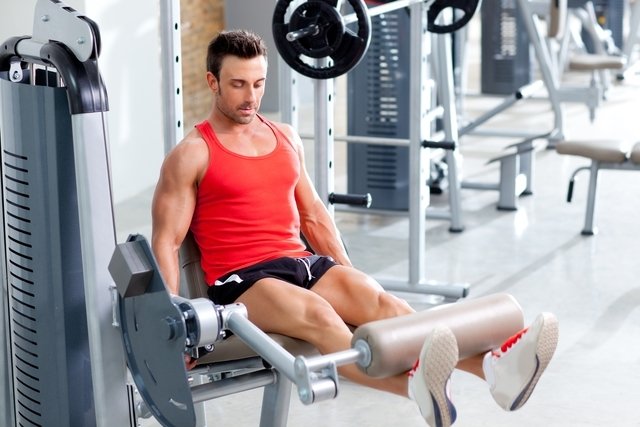
The extension chair allows you to work on the quadriceps in isolation, and the person must adjust the back of the chair so that the knee does not go beyond the line of the feet and that the person is completely leaning against the chair during the movement.
The feet must be positioned under the support roller and the person must move up the roller until the leg is completely extended, carrying out this movement in accordance with the recommendation of the physical education professional.
11. Calf exercise
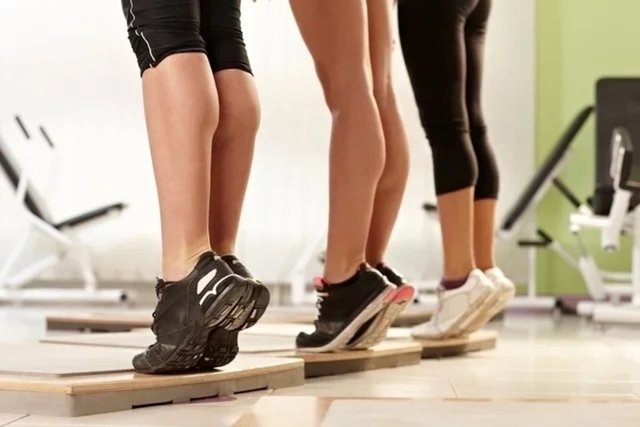
To work the calves, the exercise can be done standing or sitting, with just your own body weight or using a dumbbell, weight plate or a bar on your back.
In the case of the standing calf exercise, the person must lean on a wall and stand on the tip of their foot and return to the starting position, avoiding touching the floor. Another option is to go up on a step or step, supporting only the tips of your feet, stretching your calves and then lowering your heels to the level of the step or step, then performing the movement again.
In the seated exercise, you must place a dumbbell on each knee and raise your heel, keeping the tip of your foot on the floor. Then return to the starting position and perform the calf contraction movement again. See more about calf exercises.

Sign up for our newsletter and stay up to date with exclusive news
that can transform your routine!
Warning: Undefined array key "title" in /home/storelat/public_html/wp-content/plugins/link-whisper-premium/templates/frontend/related-posts.php on line 12
Warning: Undefined array key "title_tag" in /home/storelat/public_html/wp-content/plugins/link-whisper-premium/templates/frontend/related-posts.php on line 13



